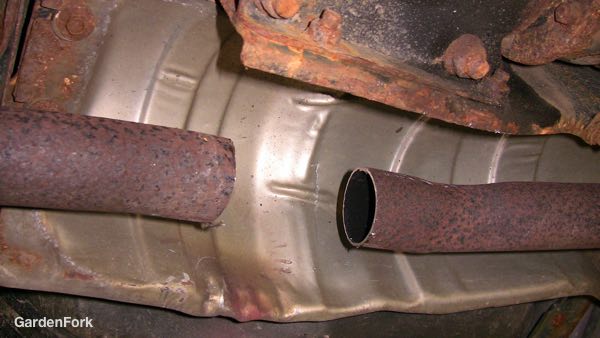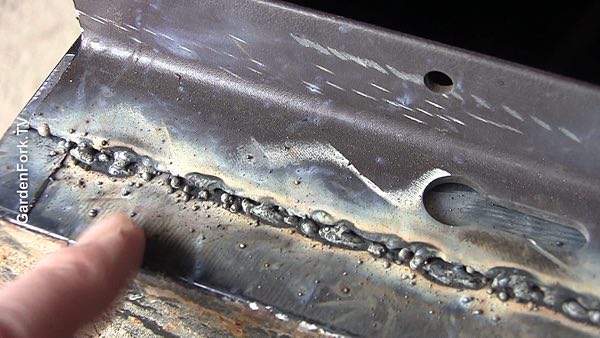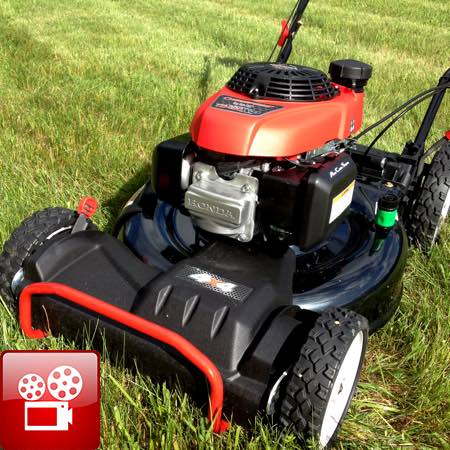Here is a recipe for homemade chalkboard paint. Its not rocket science to make, in fact, its real easy. Here we go!
The camera operator loves chalkboard paint, just on the wall, she writes out little quotes and stuff. So I got a bunch of scrap wood and I thought, it’s winter, it’s snowing, and I gotta think of stuff to do in the shop so let’s make some more of these chalkboards. But instead of that using that expensive chalkboard paint, you and I are going to make homemade chalkboard paint.
Get some latex paint and non-sanded grout. I’ve never used non sanded grout before. It’s used for tile. You can buy this in almost any hardware store, but with these two things, latex paint and grout, plus a little bit of water and a brush, and you’ve made chalkboard paint.

The latex paint I have here has been sitting around for a while so the paint needs to be shaken really well. You have the solids settled to the bottom so I actually like to shake the can upside down. Make sure you got that lid on tight. Use what you got for a mixing stick, but bring the bottom of the can to the top. You can see on the mixing stick the solids. Bring them from the bottom to the top, mix for longer than you think one should. It will help.
Here’s the homemade chalkboard paint recipe. One cup of latex paint, one tablespoon of water, two tablespoons of unsanded grout. This is from my friend, Eric, at the RootSimple.com blog. Really brilliant.
How do you measure a cup of paint? You don’t want to ruin your baking measuring cups, right? I have an answer. I’m gonna wanna make two cups of chalkboard paint. So what I did was I got two cups of water and I’m gonna pour it into a yogurt container and then I’m gonna mark that on the side of the container. Then remove the water and pour in your well mixed black paint.

I’m wondering if you can get a smaller box of the unsanded grout, but this is what the hardware store had, so this is what we got. The tablespoon measure we’re using, I stole from our coffee machine. Don’t tell anyone, okay? This grout has kind of a clay like, powdered clay… It’s almost like talcum powder or like cornstarch. Two tablespoons of grout per cup and we are making two cups of chalkboard paint, so we want four tablespoons of grout. And then, for each cup of paint, we want a tablespoon of water. Now we mix. I think that addition of the water is a key thing, ’cause adding in that much of the unsanded grout into thick paint, can make this really thick.
So let’s talk about what we want to do with this. I had an idea for kind of a big chalkboard like our Pallet Frame Chalkboard, and then, maybe, some more neat little chalkboards just on some scrap wood and I happen to be a scrap wood hoarder.
It just occurred to me, if you’re using a can of black paint that isn’t brand new, in other words, you’ve used it for something else, there’s probably plenty of space in the can to make the homemade chalkboard paint. You could just mix everything right in here, maybe kind of guesstimate how many cups of paint are left and then add in the unsanded grout and some water. I just thought of that.
BTW: I’ve found the mix needs a little more water than the chalkboard paint recipe states. It’s like milkshake thick.
I found a stair tread in my scrap wood pile. I think it’s pine, I don’t think it’s oak, but a little cleanup and I think this would make kind of a nice, horizontal, simple chalkboard. I’m gonna put a little bit of a border on it and I don’t have any that blue tape, so we’re gonna… GardenFork’s all about Use What You Got. You know we got? Cheap duct tape. That’ll work, maybe…

The chalkboard paint goes on really easily. I’m wondering, I’m using a chip brush but could you use a paint roller? How would that work? This board has lines in it from the brush. What if we used a roller?
I have another stair tread and I found a mini roller. Mini rollers are great for painting. Let’s roll a second piece of wood and see the textural difference. We’ll let ’em dry overnight and then take a look. I think the clay just thickens the paint up over time, so I’ve add a little more water to make it rollable. I’m didn’t mask the edges this one. I’m just kind of make my own little rectangle. I like the rough, not everything has to be pristine and sharp-edged in my life, so here we go.

Protip: so how do you save the paint roller ’cause we may want to do a second coat or work on some more later? I have a whole video about painting tips and tricks. Here’s one. Take your roller, roll it up with plastic food wrap, and then halfway through, fold the edges over and finish rolling. There you go. That’ll last till tomorrow now.
I really like how both of the DIY chalkboards came out. And we just used wood we had lying around the shop. Nice.























 You can also use this hack to do a muffler pipe repair. You would have to find a really long pipe clamps or connect together several pipe clamps. You can you can usually get clamps about 4 inches in diameter, if you buy a bunch of those you could connect them end to end and then wrap a big piece of metal around the muffler. This kind of muffler repair is not going to last really long but it would reduce the noise but your car is making – fewer people would stare at you at the red light intersection!
You can also use this hack to do a muffler pipe repair. You would have to find a really long pipe clamps or connect together several pipe clamps. You can you can usually get clamps about 4 inches in diameter, if you buy a bunch of those you could connect them end to end and then wrap a big piece of metal around the muffler. This kind of muffler repair is not going to last really long but it would reduce the noise but your car is making – fewer people would stare at you at the red light intersection!































 This video shows how we improved version of
This video shows how we improved version of 







 I did some welding on the
I did some welding on the 



























